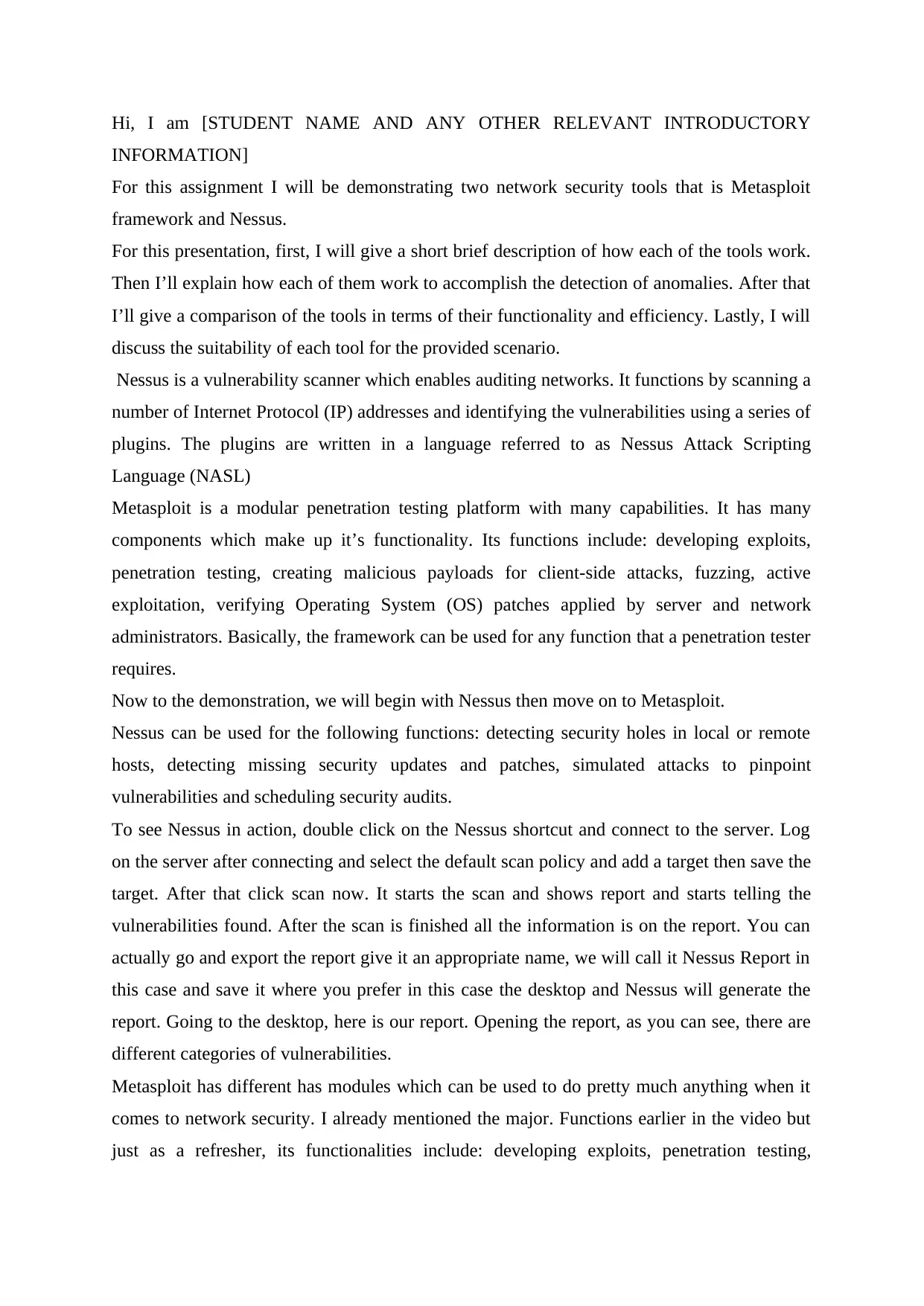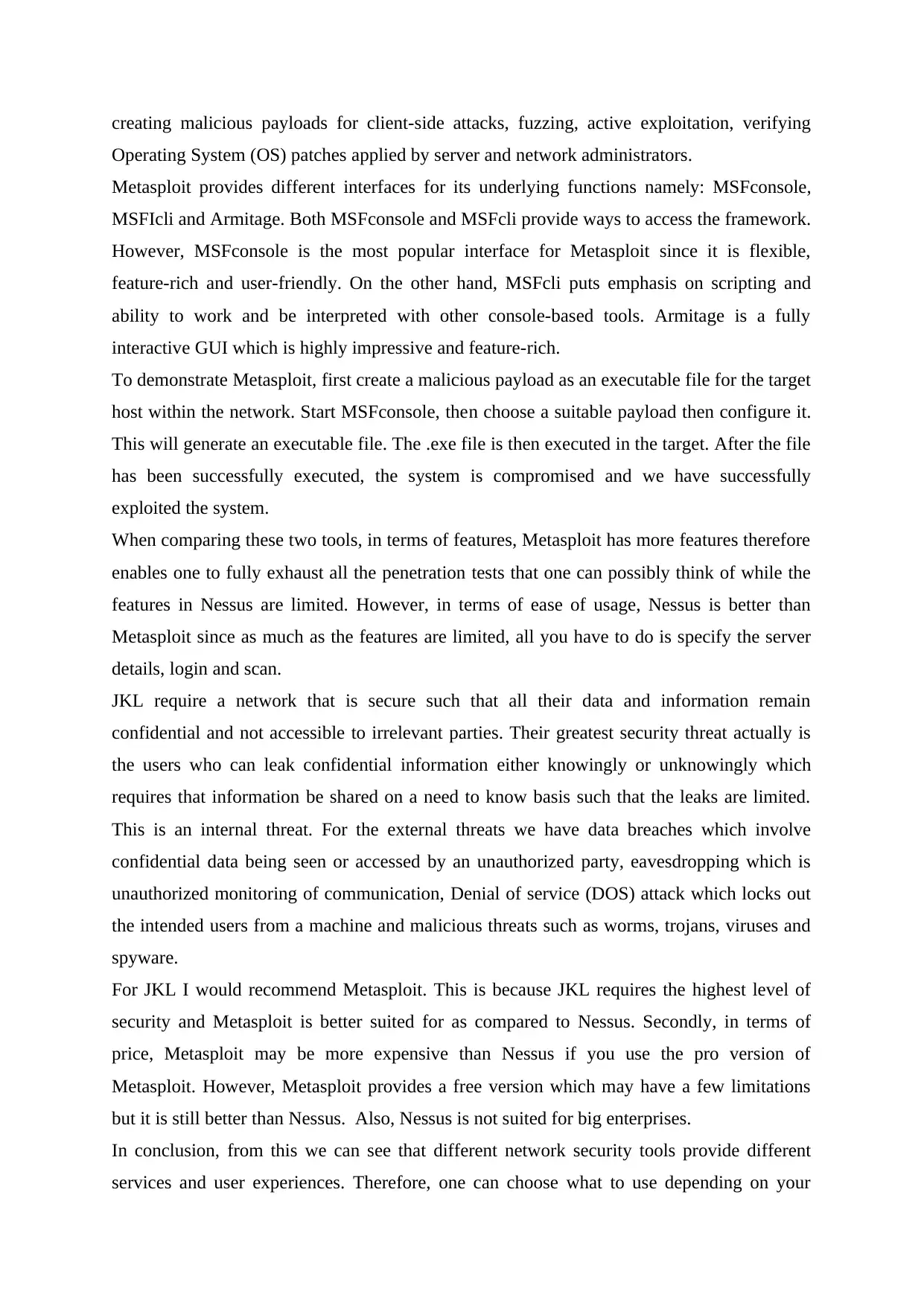Network Security Tools: Metasploit and Nessus Analysis and Comparison
VerifiedAdded on 2022/12/23
|3
|1000
|38
Presentation
AI Summary
This presentation provides a comparative analysis of two network security tools: Metasploit and Nessus. It begins with brief descriptions of how each tool functions, including Nessus's vulnerability scanning using plugins and Metasploit's modular penetration testing capabilities. The presentation then demonstrates how each tool detects anomalies, followed by a comparison of their features, functionalities, and ease of use. The presenter highlights the strengths and limitations of each tool, considering factors such as feature richness and suitability for various scenarios. The presentation concludes with a recommendation for the use of Metasploit for an enterprise like JKL, emphasizing its advanced security capabilities and suitability for addressing internal and external threats, while also considering the pricing and limitations of both tools. The presentation underscores the importance of aligning tool selection with specific security requirements and understanding the advantages and disadvantages of each tool in different contexts.
1 out of 3










![[object Object]](/_next/static/media/star-bottom.7253800d.svg)